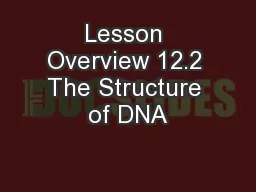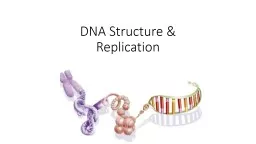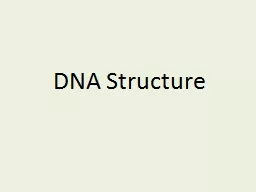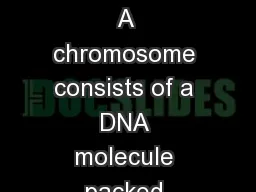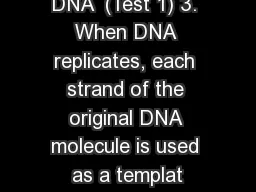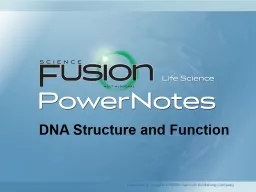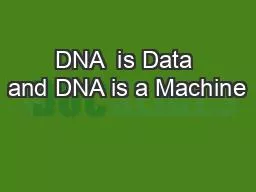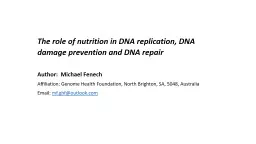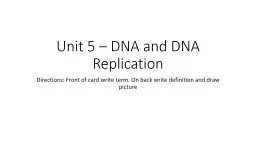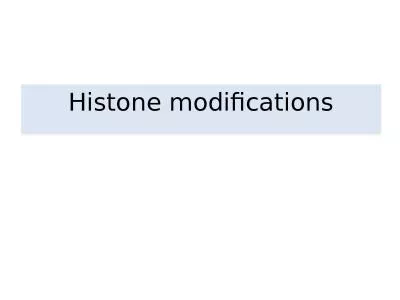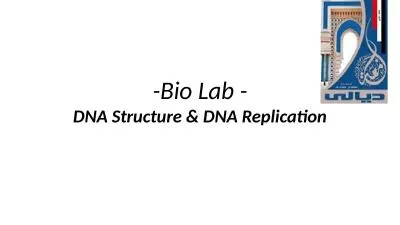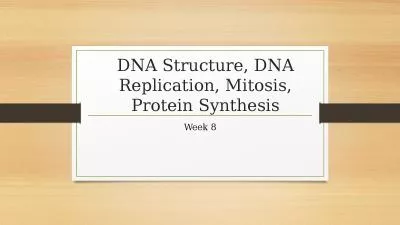PPT-Lesson Overview 12.2 The Structure of DNA
Author : lindy-dunigan | Published Date : 2018-03-06
THINK ABOUT IT The DNA molecule must somehow specify how to assemble proteins which are needed to regulate the various functions of each cell What kind of structure
Presentation Embed Code
Download Presentation
Download Presentation The PPT/PDF document "Lesson Overview 12.2 The Structure of DN..." is the property of its rightful owner. Permission is granted to download and print the materials on this website for personal, non-commercial use only, and to display it on your personal computer provided you do not modify the materials and that you retain all copyright notices contained in the materials. By downloading content from our website, you accept the terms of this agreement.
Lesson Overview 12.2 The Structure of DNA: Transcript
Download Rules Of Document
"Lesson Overview 12.2 The Structure of DNA"The content belongs to its owner. You may download and print it for personal use, without modification, and keep all copyright notices. By downloading, you agree to these terms.
Related Documents

